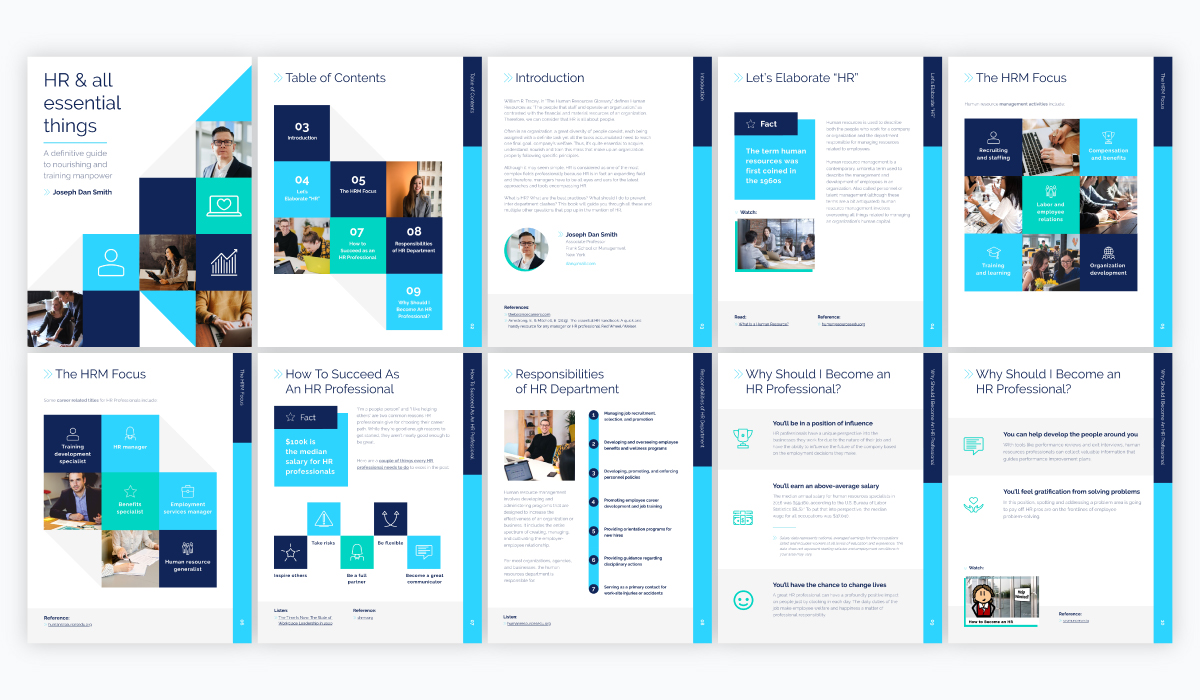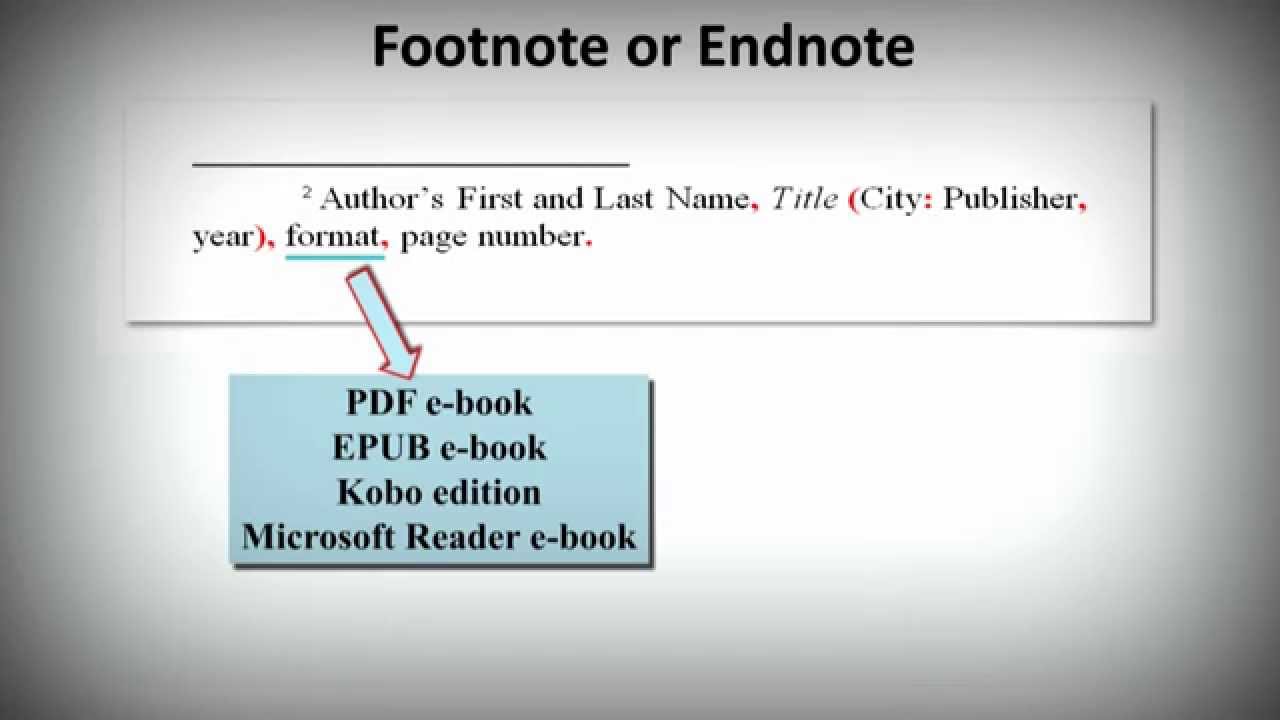Introduction
Welcome to the world of eBook writing and publishing! In today’s digital age, creating and sharing your own eBook has become more accessible than ever. Whether you have a passion for fiction, want to share your expertise, or have a story to tell, writing an eBook allows you to reach a global audience and potentially generate income from your creative efforts.
In this article, we will guide you through the process of writing and publishing your own eBook. From choosing a topic to marketing and promoting your work, we will cover all the essential steps to help you bring your ideas to life.
Writing an eBook not only allows you to express your creativity but also offers a platform for sharing valuable knowledge and insights. Whether you are an established author or a first-time writer, the steps outlined in this guide will assist you in creating a high-quality eBook that engages readers and stands out in the digital marketplace.
While the process of writing and publishing an eBook may seem daunting at first, it is important to remember that it is a rewarding and gratifying experience. By following the steps we will outline, you will gain the knowledge and confidence needed to bring your eBook to fruition.
Throughout this guide, we will provide you with tips, resources, and insights to ensure your eBook achieves success. From conceptualizing your ideas to formatting, designing, and promoting your eBook, we will cover all the aspects necessary to create a compelling and professional eBook.
So, without further ado, let’s dive into the exciting world of eBook writing and publishing, and discover how you can turn your words into a captivating digital masterpiece!
Choosing a Topic
When it comes to writing an eBook, choosing the right topic is crucial. It is the foundation upon which your entire eBook will be built, so it’s important to select a topic that resonates with your audience and aligns with your expertise and interests.
Start by considering your passions and areas of expertise. What are you knowledgeable about? What do you enjoy talking and writing about? Choosing a topic that you are passionate about will not only make the writing process more enjoyable but also ensure that you can bring a unique perspective and valuable insights to your eBook.
Next, conduct market research to determine the demand for your chosen topic. Look for trends and popular themes in your niche. Are there already a lot of eBooks on your chosen topic? What are the gaps and opportunities that you can fill with your eBook? By understanding the market landscape, you can position your eBook to stand out and offer something valuable to your readers.
Additionally, consider the target audience for your eBook. Who are you writing for? What are their needs, pain points, and interests? Understanding your target audience will help you tailor your content and deliver value that resonates with them.
Brainstorm potential ideas and narrow them down to the most promising ones. Consider the uniqueness and originality of your topic. Is it something that hasn’t been explored extensively? Can you offer a fresh perspective or unique insights? Having a distinctive angle will make your eBook more appealing to readers.
Lastly, evaluate the commercial viability of your topic. While writing an eBook is undoubtedly a creative endeavor, it’s also important to consider its marketability. Is there a demand for your topic? Can you monetize your eBook effectively? Researching the market and analyzing competitors’ eBooks will help you assess the commercial potential of your chosen topic.
Remember, choosing a topic is one of the most important decisions you will make in the eBook-writing process. Take the time to explore your interests, research the market, and understand your target audience. By selecting a topic that aligns with your expertise, resonates with readers, and offers a unique perspective, you will set yourself up for success in writing and publishing your eBook.
Researching and Outlining Your eBook
Once you have chosen a topic for your eBook, the next step is to conduct thorough research and create a solid outline. Researching will give you a deeper understanding of your subject matter, while outlining will provide structure and organization to your eBook.
Start by gathering information from credible sources such as books, academic papers, reputable websites, and interviews with experts in your field. This will help you gather relevant and accurate information to support your content.
As you research, take notes and organize the information into different sections or chapters. Identify key points, ideas, and supporting evidence that you want to include in your eBook. This will help you stay organized and ensure a logical flow of information.
Consider the different subtopics or sections that you want to cover in your eBook. Break them down into manageable chapters or sections and arrange them in a logical order. This will help you create a cohesive and structured eBook that is easy for readers to follow.
Once you have gathered all the necessary information and organized it into an outline, take the time to review and refine it. Ensure that each chapter or section flows smoothly into the next, creating a seamless reading experience for your audience.
During the outlining process, it’s also important to consider the length and scope of your eBook. Determine the desired word count and allocate the appropriate amount of content to each chapter or section. This will help you maintain balance and ensure that you cover your topic comprehensively.
Remember, outlining is not only about organizing your content but also about identifying any gaps or areas that require further research. If you come across any topics or points that need more information, take note of them and plan to conduct additional research.
Overall, researching and outlining your eBook lays the foundation for a well-structured and informative piece of work. It allows you to gather the necessary information, organize it logically, and identify any gaps in your knowledge. By conducting thorough research and creating a detailed outline, you will be well-prepared to dive into the writing process and create a valuable eBook.
Writing and Editing Your eBook
With a solid outline in place, it’s time to embark on the writing and editing process of your eBook. This is where you bring your ideas to life and craft compelling content that engages and captivates your readers.
Start by setting aside dedicated time for writing. Establishing a consistent writing routine will help you stay focused and make progress on your eBook. Find a quiet and comfortable environment, free from distractions, where you can fully immerse yourself in the writing process.
As you begin writing, keep your target audience in mind. Write in a language and tone that resonates with them. Whether you’re writing a technical manual or a fictional story, maintaining a clear and concise writing style will ensure that your message is effectively communicated.
Don’t be afraid to let your creativity shine. Infuse your eBook with your unique voice and personality, making it a reflection of your own style. This will help you establish a connection with your readers and make your eBook feel more authentic.
Remember to break your content into sections or chapters, as outlined in your initial plan. This will make your eBook more readable and digestible for your audience. Use subheadings, bullet points, and numbered lists to enhance the clarity and organization of your content.
Once you have completed the writing process, it’s time to shift gears and focus on editing. Editing is a crucial step in refining your eBook and ensuring its quality. Review your content for grammar, spelling, punctuation, and clarity.
A fresh pair of eyes can be invaluable during the editing stage. Consider enlisting the help of a trusted friend, colleague, or hiring a professional editor to provide objective feedback and suggestions for improvement.
Read your eBook out loud to catch any awkward phrasing or sentences that may need rewording. Check for consistency in tone, style, and formatting throughout your eBook. Make sure your content is engaging, informative, and aligns with your initial objectives.
Remember, writing and editing are iterative processes. Don’t be discouraged if you need to revise and polish your eBook multiple times. Each round of editing will help you refine your content and enhance the overall quality of your eBook.
By investing time and effort into the writing and editing process, you will produce a well-crafted and impactful eBook that resonates with your readers. So, embrace the creative process, refine your writing, and take pride in the finished product you’re about to share with the world.
Designing Your eBook
Design plays a crucial role in the success of your eBook. A well-designed eBook not only enhances the reader’s experience but also adds a professional and polished touch to your work. From the cover to the layout, designing your eBook is an important step that should not be overlooked.
Start with creating a visually appealing and compelling cover. Your eBook cover is the first thing readers will see, so it should be eye-catching, relevant to your content, and reflective of your style. If you’re not a designer, consider hiring a professional or using online tools to create a captivating cover that grabs attention.
When it comes to the layout of your eBook, keep it clean, organized, and easy to read. Use consistent fonts, colors, and formatting throughout your eBook to maintain a cohesive look. Break your content into sections or chapters, and consider adding headers, subheadings, and page numbers for better navigation.
Utilize visuals to enhance your eBook. Incorporate relevant images, graphs, or infographics that support and clarify your content. However, it’s important to strike a balance between text and visuals, ensuring they complement each other rather than overwhelming the reader.
Consider the readability of your eBook. Choose fonts and font sizes that are easy on the eyes and ensure sufficient spacing between lines and paragraphs. Pay attention to formatting elements such as indentation, bullet points, and numbering to create a visually pleasing and organized layout.
While designing your eBook, it’s also important to optimize it for multiple devices. Ensure that your eBook is responsive, meaning it displays correctly and is easily readable on various devices, including smartphones, tablets, and e-readers.
If you’re not comfortable with design software, there are numerous eBook design tools available that offer pre-designed templates and drag-and-drop functionality. These tools make it easier for you to create a professional-looking eBook without the need for extensive design skills.
Remember, the design of your eBook is an essential aspect that influences the perception of your work. Investing time and effort into designing a visually appealing and reader-friendly eBook will not only attract more readers but also enhance the overall reading experience.
So, take the time to carefully design your eBook, ensuring that it captures the essence of your content while providing an enjoyable experience for your readers.
Formatting and Converting Your eBook
Once you have written and designed your eBook, the next step is to format and convert it into a digital file that can be easily accessed and read by your audience. Proper formatting will ensure that your eBook displays correctly on different devices and platforms, providing a seamless reading experience.
Begin by selecting the appropriate file format for your eBook. The most common formats for eBooks are EPUB and MOBI. EPUB is widely supported and can be read on most devices and e-reader apps, while MOBI is specifically designed for Kindle devices.
Before formatting your eBook, make sure to clean up any unnecessary formatting from your original document. Remove extra spaces, tabs, and unnecessary font styles such as bold or italics. This will ensure that your eBook appears consistent and professional.
Consider using a tool or software specifically designed for eBook formatting. These tools provide templates and guidelines that make it easier to format your eBook correctly. They also offer features such as adding a table of contents, adjusting font sizes, and embedding hyperlinks.
Pay attention to the overall layout and styling of your eBook. Ensure that headings, subheadings, paragraphs, and images are properly aligned and formatted. Use appropriate line spacing and margins to improve readability.
Embed hyperlinks within your eBook for easy navigation and referencing. If you have sources, citations, or external references, hyperlink them to the appropriate URLs. This will allow readers to access additional information with just a click.
Include a table of contents at the beginning of your eBook. This serves as a roadmap for readers, enabling them to jump directly to specific chapters or sections. It also enhances the professional appearance of your eBook.
Once you have formatted your eBook, it’s important to test it on different devices and platforms to ensure that it displays correctly. Check for any formatting issues, errors, or inconsistencies and make the necessary adjustments.
Finally, convert your eBook into the desired file format. There are various online conversion tools available that can convert your eBook into EPUB or MOBI formats. These tools typically require you to upload your formatted eBook and will generate the converted file for you to download.
By carefully formatting and converting your eBook, you will ensure that it is accessible and readable on various devices and platforms. Proper formatting enhances the overall reading experience and presents your work in a professional and polished manner.
So, take the time to properly format and convert your eBook, ensuring that it meets the required specifications for different devices and platforms.
Creating a Cover for Your eBook
The saying “Don’t judge a book by its cover” may hold true in some situations, but when it comes to eBooks, a captivating cover is essential. The cover is the first visual impression that potential readers will have of your eBook, so it’s crucial to create a cover that grabs attention and entices them to explore further.
Start by understanding the genre and target audience of your eBook. Research popular eBook covers in your genre and analyze their key elements. This will give you a sense of what works well and help you identify design trends and styles that resonate with your readers.
Consider hiring a professional cover designer if you don’t have experience in design. An experienced designer can create a bespoke cover that captures the essence of your eBook and aligns with its genre. However, if you prefer to design the cover yourself, there are plenty of online tools and software that can assist you in creating a visually appealing cover.
Think about the visual elements that will best represent your eBook. Choose high-quality images or illustrations that convey the mood, theme, or central idea of your eBook. Ensure that the imagery is relevant, engaging, and aligns with your target audience’s preferences.
Select appropriate fonts and typography for your eBook title and author name. The fonts should be legible and reflect the tone and genre of your eBook. Experiment with different font combinations to find the right balance between readability and visual appeal.
Consider the layout and composition of your eBook cover. Position the title and author name strategically to make them easily readable, even in thumbnail form. Experiment with different placements, sizes, and effects to find the most appealing arrangement.
Use colors wisely to create an attention-grabbing cover. Colors evoke emotions and can set the mood for your eBook. Research color psychology and choose colors that align with the genre and theme of your eBook, while also capturing the attention of potential readers.
Add enticing text or taglines to intrigue readers and give them a glimpse of what your eBook has to offer. Keep the text concise, impactful, and aligned with the genre and tone of your eBook.
Regularly test your cover design on different devices and platforms to ensure that it looks appealing and grabs attention across various screen sizes.
Remember, a well-designed eBook cover serves as a powerful marketing tool that can attract readers and drive sales. Take the time to craft a visually stunning cover that accurately represents your eBook and appeals to your target audience.
So, invest care and attention into creating a captivating cover for your eBook, and watch as it entices readers to discover the content within.
Pricing and Publishing Your eBook
Once you have written, formatted, and designed your eBook, it’s time to determine the appropriate price and publish it on various platforms. Setting the right price for your eBook and making it available to a wide audience are crucial steps in maximizing its reach and potential income.
Start by researching the market and analyzing the pricing of similar eBooks in your genre. This will give you an idea of the current price range and help you set a competitive yet profitable price for your eBook. Consider factors such as the length, quality, and perceived value of your eBook when determining its price.
It’s important to strike a balance between an affordable price that attracts readers and a price that reflects the value and effort you have put into creating your eBook. Experiment with different price points and monitor sales to determine the optimal price for your eBook.
Choose the publishing platforms where you want to make your eBook available. Popular choices include Amazon Kindle Direct Publishing (KDP), Apple Books, Barnes & Noble Press, and Smashwords. Each platform has its own requirements and formatting guidelines, so ensure that your eBook meets their specifications before publishing.
When publishing your eBook, provide a compelling book description that effectively communicates the benefits and value of your eBook to potential readers. Use relevant keywords to optimize its discoverability in search results.
Consider whether you want to opt for exclusive publishing through Amazon’s Kindle Select program, which offers benefits such as promotional opportunities and increased exposure. However, keep in mind that it requires you to make your eBook exclusive to Kindle for a certain period of time.
Take advantage of the marketing and promotional tools provided by the publishing platforms. Utilize social media, author websites, and other promotional channels to build awareness and generate interest in your eBook.
Regularly monitor your eBook’s performance and adjust your pricing and marketing strategies as needed. Analyze sales data, reader reviews, and feedback to gauge the reception of your eBook and make necessary improvements for future works.
Consider leveraging advertising platforms and promotional opportunities such as book giveaways, discounts, or collaborations with other authors to expand your reach and attract more readers.
Remember, pricing and publishing your eBook is a dynamic process. Continuously evaluate and refine your marketing and pricing strategies to optimize sales and reach as many readers as possible.
So, carefully price your eBook, choose the right publishing platforms, and utilize marketing techniques to increase its visibility and attract your target audience.
Marketing and Promoting Your eBook
Marketing and promoting your eBook is just as important as writing and publishing it. Without effective marketing strategies, your eBook may not reach its intended audience and may not generate the sales and recognition it deserves. Here are some key steps to effectively market and promote your eBook:
1. Build an author platform: Establish a strong online presence through a dedicated author website or blog. Use social media platforms to engage with your target audience, share updates about your eBook, and build a community of readers.
2. Leverage the power of book reviews: Encourage readers to leave reviews for your eBook on platforms like Amazon, Goodreads, and social media. Positive reviews not only enhance your eBook’s visibility and credibility but also serve as powerful social proof for potential readers.
3. Collaborate with influencers: Reach out to bloggers, podcasters, and social media influencers in your niche. Offer them a free copy of your eBook in exchange for an honest review, feature, or interview. Their endorsement can help expand your reach and attract new readers.
4. Utilize email marketing: Build an email list of interested readers by offering a free sample chapter or bonus content related to your eBook. Regularly communicate with your subscribers, sharing updates, exclusive content, and special promotions.
5. Engage with your audience: Interact with readers through social media, blog comments, and email. Respond to their questions, acknowledge their feedback, and show appreciation for their support. Building personal connections with your audience creates a loyal community of readers.
6. Offer promotions and discounts: Temporarily reduce the price of your eBook or offer it for free for a limited time. Promote these limited-time offers through social media, newsletters, and relevant websites to attract new readers and generate buzz.
7. Guest blogging and podcasting: Seek opportunities to guest post on relevant blogs or be a guest on podcasts. This allows you to reach a new audience, establish credibility in your niche, and direct them to your eBook.
8. Utilize online advertising: Consider running online ads on platforms such as Facebook, Google, or Amazon to target your desired audience. Set a budget and monitor the performance of your ads to optimize your marketing efforts.
9. Participate in book awards and contests: Submit your eBook to relevant book awards and contests to gain recognition and garner attention from potential readers, agents, and publishers. Winning or being a finalist can significantly boost your eBook’s visibility and credibility.
10. Collaborate with other authors: Consider collaborating with other authors for cross-promotion. Participate in joint author events, bundle your eBooks together for a limited time, or feature each other’s work in your newsletters.
Remember, marketing and promoting your eBook is an ongoing process. Continually explore new opportunities, experiment with different strategies, and adapt your approach based on feedback and results. By effectively marketing and promoting your eBook, you can reach a wider audience and increase your chances of success.
Tracking and Analyzing Your eBook Sales
Tracking and analyzing your eBook sales is crucial to understanding the performance of your eBook and making informed decisions to optimize your marketing and sales strategies. By monitoring key metrics and data, you can gain valuable insights into your audience, sales trends, and the effectiveness of your promotional efforts.
Start by utilizing the analytics and reporting tools provided by the publishing platforms. Platforms like Amazon KDP, Apple Books, and Barnes & Noble Press offer sales dashboards that provide detailed information such as daily, monthly, and cumulative sales figures, royalty earnings, and geographical distribution of your sales.
Keep track of the number of eBooks sold or downloaded, as well as the revenue generated. Monitor the sales patterns over time to identify any fluctuations or trends, such as increased sales during specific seasons or after promotional activities.
Utilize the data to analyze your sales by geographic region, identifying areas where your eBook is performing well and those that may require additional marketing efforts. This can help you identify new opportunities for targeting your audience and tailoring your promotional strategies.
Monitor customer reviews and ratings. Analyzing the feedback from readers can provide valuable insights into the strengths and weaknesses of your eBook. Pay attention to recurring themes or suggestions for improvement, and use this feedback to enhance future editions or create new eBooks.
Track the effectiveness of your marketing campaigns. Use specific tracking links or promotional codes to monitor the source of your sales. This will help you understand which marketing channels are most successful in driving sales and enable you to allocate your resources accordingly.
Investigate trends in eBook pricing and sales rank within your genre. Analyze the pricing strategies of successful eBooks in your niche and assess how your eBook’s pricing compares to similar titles. Monitor your eBook’s sales rank to gauge its visibility and competitiveness in the market.
Consider using external analytics tools to gain deeper insights into your eBook’s performance. Tools like Google Analytics can provide valuable data on website traffic, visitor behavior, and conversion rates if you have a dedicated author website or blog.
Regularly review and adjust your marketing and promotional strategies based on the data you collect. Experiment with different tactics and monitor their impact on your sales. This data-driven approach will allow you to refine your strategies, target your efforts more effectively, and maximize your eBook’s success.
Remember, tracking and analyzing your eBook sales is an ongoing process. Continually assess the data, look for patterns, and adapt your strategies to optimize your sales and achieve your goals as an eBook author.
Conclusion
Congratulations on completing your eBook journey! From choosing a topic to publishing and marketing your eBook, you have gained valuable insights into the process of creating and sharing your work with the world. Writing and publishing an eBook is an exciting and rewarding endeavor that allows you to showcase your expertise, creativity, and passion.
Throughout this guide, we have covered the essential steps to help you write, format, design, and promote your eBook effectively. From conducting thorough research to crafting engaging content, from designing an eye-catching cover to pricing and publishing your eBook, and finally, from marketing and tracking your sales, every aspect plays a vital role in the success of your eBook.
Remember that the eBook industry is highly dynamic and ever-evolving. Stay informed about current trends, reader preferences, and new platforms or marketing strategies that can help you reach a wider audience.
Embrace the importance of continuous learning and improvement. Solicit feedback from your readers, learn from their reviews, and use that knowledge to refine your craft for future eBook projects.
Let your passion for writing guide you as you embark on this journey. Dedicate time and effort to producing high-quality content, and remember that patience, diligence, and perseverance are key to achieving success in the competitive eBook market.
So, take the knowledge and insights gained from this guide and apply it to your own eBook-writing journey. Let your imagination soar, your words flow, and watch as your eBook captivates readers and opens up new opportunities for you as an author.
Best of luck, and may your eBook be a source of inspiration, learning, and enjoyment for readers around the world!

























